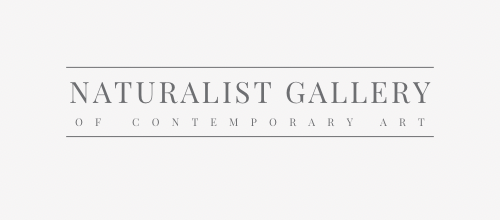Featured Image: Gustave Courbet (1843-1845) The Desperate Man
Chiaroscuro is an Italian art technique using strong light and dark contrasts to achieve depth and volume. Prominent during the Renaissance and Baroque eras, artists like Leonardo, Caravaggio, and Rembrandt mastered it. Still influential today, chiaroscuro adds drama and emotional intensity to visual narratives.

Bill Henson Untitled, 2009-2022; CL SH727 N6B; Archival inkjet pigment print; 127 x 180 cm; Edition of 5 + 2 AP
Chiaroscuro, an Italian term meaning 'light-dark,' is a technique in art that involves the skillful use of strong contrasts between light and dark to create depth and volume in a composition. The technique originated during the Renaissance and became prominent in Baroque art. Renowned artists such as Leonardo da Vinci, Caravaggio, Rembrandt, Vermeer, Goya, and Georges de La Tour are among those who have masterfully employed chiaroscuro to achieve powerful visual effects.
Explore our curated selection of contemporary artists from around the globe.
Naturalist Gallery offers artist representation internationally. Apply your art.

The Virgin of the Rocks (about 1491/2-9 and 1506-8) Leonardo da Vinci
-
Origin and Development: Chiaroscuro originally emerged as drawing on colored paper during the Renaissance, gradually evolving into a painting mode to achieve three-dimensionality in Italy and Flanders. The technique has since become a canonical painting mode of the Renaissance, along with other techniques such as cangiante, sfumato, and union.
Raphael (1518) The Holy Family
-
Chiaroscuro Modelling: In painting, drawing, and printmaking, chiaroscuro modelling is used to create the effect of light and shadow on three-dimensional objects and figures. It involves using gradations of color value and the analytical division of light and shadow shapes to achieve a sense of volume and form. Artists like Raphael exemplified this technique in their works, carefully using light and dark to model the body of their subjects.
Lucas Cranach the Elder (1510-1515) The Werewolf or the Cannibal
-
Chiaroscuro Woodcuts: Chiaroscuro woodcuts are prints produced using different woodblocks, each inked with a different color, to achieve varying light and dark tones. This technique originated in Germany in the early 16th century and later spread to Italy. Lucas Cranach the Elder, Hans Burgkmair, and Ugo da Carpi are notable artists associated with this form of printmaking.
Caravaggio (1598–1599 or 1602) Judith Beheading Holofernes
-
Compositional Chiaroscuro to Caravaggio: In northern Europe, compositional chiaroscuro gained popularity with artists such as Hugo van der Goes and Ugo da Carpi. Caravaggio and his followers further developed the style of tenebrism, where dramatic chiaroscuro became a dominant stylistic device. This powerful use of light and shadow added drama and emotional intensity to their works.
Artemisia Gentileschi (1614-1618) Judith slaying Holofernes
-
Chiaroscuro in the 17th and 18th Centuries: Chiaroscuro continued to be a popular technique during the Baroque period, especially in Spain and the Spanish-ruled Kingdom of Naples. Artists like Peter Paul Rubens and Artemisia Gentileschi were prominent practitioners of tenebrism. The technique was also adapted in the Dutch Republic, notably by Rembrandt van Rijn, who used single-candle light sources to create emotive effects.
Patsy Ruth Miller as Esmeralda and Lon Chaney as Quasimodo in Wallace Worsley’s silent “The Hunchback of Notre Dame” (1923)
-
Chiaroscuro in Cinema and Photography: The dramatic lighting technique of chiaroscuro found its way into cinematography, particularly in black and white films such as "Nosferatu" and "The Hunchback of Notre Dame." Stanley Kubrick's "Barry Lyndon" famously utilized natural candlelight to achieve an authentic and captivating visual effect. Chiaroscuro also influences the work of photographers like Bill Henson, Josef Koudelka, and Annie Leibovitz.

crop of John Lennon and Yoko Ono (1980) by Annie Leibovitz
View limited edition prints by contemporary artists at Naturalist Gallery.
Chiaroscuro remains a timeless and impactful technique that artists and filmmakers continue to use to create captivating and emotionally charged visual narratives. Through the skillful interplay of light and shadow, chiaroscuro adds depth, drama, and dimension to art and film, captivating viewers and invoking profound emotional responses.
Josef Koudelka (1987) Parc de Sceaux, Hauts-de-Seine, France

You may also find the following articles helpful:
Understanding Memento Mori in Art
What is Tone in Art: Understanding Color Value
Comparing All Paint Mediums: A Comprehensive Guide
How to Clean and Preserve Oil Paintings

